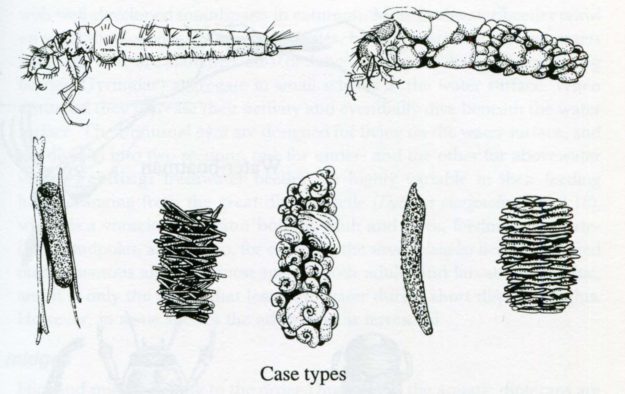Christer Brönmark & Lars-Anders Hansson, The Biology of Lakes and Ponds, Oxford, Oxford University Press, 1998, p. 82.
Most caddiesflies that inhabit ponds and lakes construct a portable protective case of leaves, sand, stones, snail shells, or other materials. The shape of the case is highly variable and can often be used as a diagnostic feature for species determination. For example, Phryganea cuts out rectangular pieces of plant material and cements them together to a cylindrical spiral, and Leptocerus uses sand grains to build a narrow, conical tube (Fig. 3.17). The cases are cemented together and lined with silk produced by the salivary glands. Caseless caddis larvae are common in streams but in standing waters only a few species lack portable cases and instead make galleries on stones or silken retreats.
